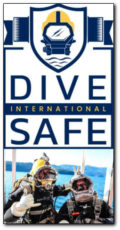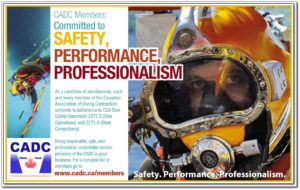 Lets start with a little bit of CADC’s colourful history. Our association was formed forty years ago in 1982 when the National Energy Board (NEB), led by Jan Merta, summoned as many Canadian contractors as possible during an Underwater Canada conference in Toronto. He wanted to “chat.”
Lets start with a little bit of CADC’s colourful history. Our association was formed forty years ago in 1982 when the National Energy Board (NEB), led by Jan Merta, summoned as many Canadian contractors as possible during an Underwater Canada conference in Toronto. He wanted to “chat.”
The scene in the meeting room was reminiscent of the Pirates of the Caribbean movie. All the usual suspects—consisting of most of the major diving companies from across Canada—gathered like a disorganized bunch of saber-rattling renegades and cynical pirates; backs to the wall and trusting no one! This was quite typical at that time.
The message from Merta was quite clear. He advised us that lots of upcoming work off the East Coast and the Arctic was coming, but NONE of us would get any work unless we belonged to an organized commercial diving association. As a representative of the NEB, he himself would not talk to individual contractors who were not part of an organized group. To accomplish this, he offered seed money to organize an association.
In a few months, the non-profit Canadian Association of Diving Contractors (CADC) was formed. Phil Nuytten from Vancouver based Can-Dive Oceaneering was elected the first president and LT-CDR Fred Cox, a retired military diving officer, was chosen to be the group’s first executive director.
The initial membership in the mid 80s hovered between 15 and 20 members. The group was comprised of larger contractors interested in the offshore oil and gas sector in the Arctic and off the East Coast.
In the 90s, advances in computer technology and the growth of the internet changed everything. We could finally reach all the diving contractors across the country. Under the leadership and guidance of accomplished, seasoned industry members serving in the roles of as CADC president, membership grew from that core group of to the present membership of over 70!
In 1999, the NEB announced that they would cease certifying occupational divers and accrediting occupational diver training. They asked industry to set up a replacement certification system that was acceptable to the NEB, the provinces, and the international community. It was decided that the CADC would create a certification agency that was independent and separate from the CADC. This became the Divers Certification Board of Canada and the resulting diver certification scheme based on the diver competency standard CSA Z275.4.
During the evolution of the CADC, a mission statement was developed to guide the organization’s goals: “The Canadian Association of Diving Contractors (CADC) will represent its member’s common interests with regards to safety and environmental standards, client satisfaction, and government intervention within our industry. The CADC will actively promote the use of its members and will supply its members with information and tools to ensure their competence, improve their performance and safety.”
Roughly translated, the CADC is the voice of its members in matters that affect the underwater service industry and forms an umbrella group to act in unison on matters that affect our industry. Its an organization that binds our underwater services members across a vast country; to provide information to our members; to keep them informed; to intervene when they request our help with government issues and matters of safety.
In 2016, the organization voted for member compliance to at least minimum safety standards (CSA Dive Standards) – or better – when there are no standards or regulations in place. This is a condition of membership with the CADC and insures a basic level of acceptable best practices of diver safety. CADC acts on violations of these standards and helps members correct deficiencies. Violations to these standards can be grounds for suspension or termination of CADC membership.
Today, CADC continues to attend CSA Diving Standards and provincial health and safety meetings representing our members. CADC members are in several key positions on these committees. We produce the CADC Magazine to promote our membership to clients and to inform clients on dive safety, regulations, standards, and professionalism required by CADC membership and members. We support a database of qualified divers (via UnderwaterJOBS.com to which CADC has access). We scan job opportunities/tenders for CADC members and alert them weekly on what may be of interest to them. We provide an industry mailing list for instant communication among members. We act in the best interest of our membership and the industry, directed by our Board of Directors, who are voted in by our members to represent them. We are the collective voice that keeps our industry members informed, safe, efficient, and professional.
So, how have we done over the years?
- The CADC has been instrumental in preventing ships from entering Eastern Canadian waters to insist on more Canadian content (many contractors entered joint ventures to get work); we forced the issue, which provided Canadian companies more opportunities.
- We helped forge safety standards and regulations that are workable for our industry.
- We take on provincial and federal regulators when ill-conceived laws aren’t in our best interest or question them if they do nothing to enhance safety.
- We spawned the formation of the Diver Certification Board of Canada (DCBC) as a spin off from CADC.
- We promote hiring only divers who follow CSA Competency Standards, of which DCBC issues certification for.
- We take on government agencies over the hiring of foreign personnel when qualified Canadian divers and companies are available.
- We facilitate and encourage foreign companies to joint venture with qualified Canadian contractors to provide services.
- We constantly answer questions for new divers / companies entering the industry and address the concerns of our members.
- We monitor controversial changes in the CSA Diving Standards and unworkable regulatory requirements.
- We supply guidance and tools to our members for compliance with diving safety standards and regulations.
In all, we simply strive to make our industry professional, ethical, and safe – and workable.
The CADC is not about individual companies; it is about a group striving for professionalism in an industry. Para-phrasing a famous quote, “Ask not what your association can do for you. Ask what you can do for the association” – this is about the sum, not the parts.
Why is our association important to our industry? Simply, our association looks after the best interests of its members for a professional, safe, and workable industry – with its members controlling what those interests are or should be.
For over 40 years, we have been doing this. The underwater services industry we work in today has significantly been influenced by our organization and its members. We have a voice within it. We will continue to do this into the future.
Not bad for a bunch of renegade pirates who met in 1982 and forged a relationship to work together today! A success story for sure! Lives have been saved.
(Pre-Release of Article in the Summer CADC magazine.)
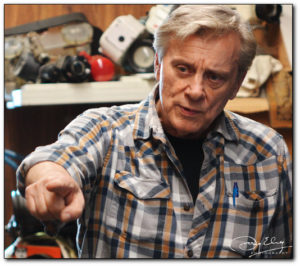 and techniques for commercial, scientific, and military industries. He co-founded Oceaneering International, Inc. in the 1970s and spear headed CanDive Services – a highly regarded and multifaceted commercial diving company.
and techniques for commercial, scientific, and military industries. He co-founded Oceaneering International, Inc. in the 1970s and spear headed CanDive Services – a highly regarded and multifaceted commercial diving company.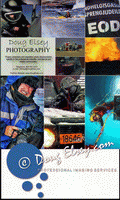


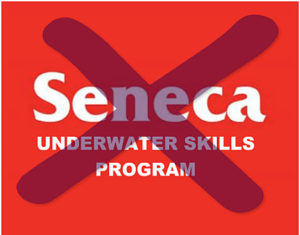 Seneca College – a publicly assisted postsecondary institution – has announced that they will be cancelling their Underwater Skills program. This decision was made WITHOUT stakeholder consultation about this action. Stakeholders include all commercial or occupational diving entities, public service safety divers, educators, military, and regulators.
Seneca College – a publicly assisted postsecondary institution – has announced that they will be cancelling their Underwater Skills program. This decision was made WITHOUT stakeholder consultation about this action. Stakeholders include all commercial or occupational diving entities, public service safety divers, educators, military, and regulators.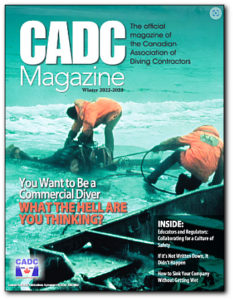
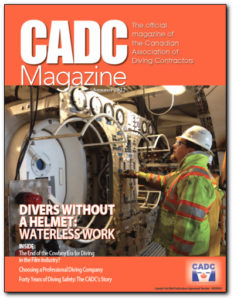 Our undersea industry is exciting, challenging, and full of adventure. That allure is why many of us have chosen it both as a career and a lifestyle. There are so many different opportunities that one doesn’t really have to be a diver in the water to participate. No matter what you’re involved in, this is a rewarding industry to build a career.
Our undersea industry is exciting, challenging, and full of adventure. That allure is why many of us have chosen it both as a career and a lifestyle. There are so many different opportunities that one doesn’t really have to be a diver in the water to participate. No matter what you’re involved in, this is a rewarding industry to build a career. Lets start with a little bit of CADC’s colourful history. Our association was formed forty years ago in 1982 when the National Energy Board (NEB), led by Jan Merta, summoned as many Canadian contractors as possible during an Underwater Canada conference in Toronto. He wanted to “chat.”
Lets start with a little bit of CADC’s colourful history. Our association was formed forty years ago in 1982 when the National Energy Board (NEB), led by Jan Merta, summoned as many Canadian contractors as possible during an Underwater Canada conference in Toronto. He wanted to “chat.”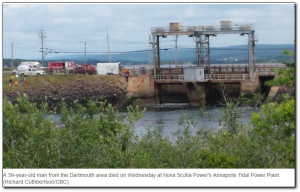 ADCI has released a Delt-P Diving Checklist to the industry. A shout-out to ADCI and OSHA (amongst others) who contributed to the document. The document also has links to other references from other organizations including CADC
ADCI has released a Delt-P Diving Checklist to the industry. A shout-out to ADCI and OSHA (amongst others) who contributed to the document. The document also has links to other references from other organizations including CADC
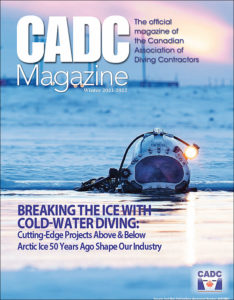 As we transition from Winter 2021 over to Winter 2022, it seems from all reports from members that it’s been a busy year for our underwater industry in Canada and the U.S.
As we transition from Winter 2021 over to Winter 2022, it seems from all reports from members that it’s been a busy year for our underwater industry in Canada and the U.S.